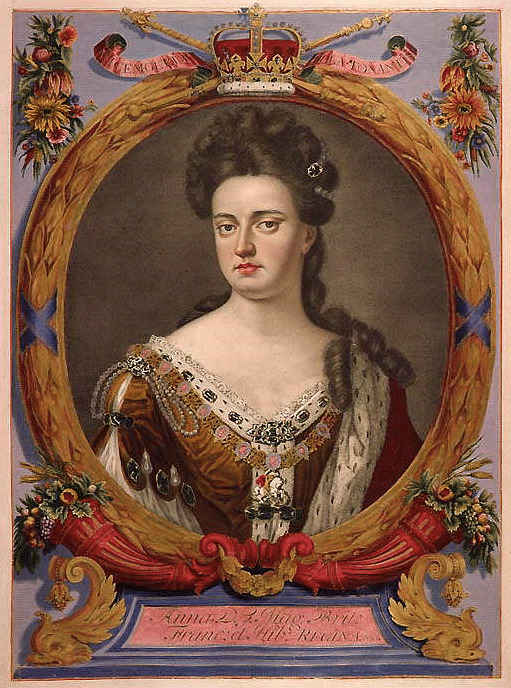#ActofUnion
Explore tagged Tumblr posts
Photo

Anne, Queen of Great Britain
Anne reigned as Queen of England, Scotland, and Ireland from 1702 and then, following the 1707 Act of Union, over a united kingdom as Queen of Great Britain until her death in 1714. The last of the Stuart monarchs, Anne's reign witnessed the Spanish War of Succession which helped Britain establish itself as a major world power.
The Stuart Family
James II of England (r. 1685-1688) took over the throne from his late brother Charles II of England (r. 1660-1685) since the latter had no legitimate heir. James was a Catholic, but part of the deal which allowed him to succeed his Protestant brother in 1685 was that he promise to raise his two daughters as Protestants. James' first wife was Anne Hyde, the daughter of the Earl of Clarendon (m. 1660). The couple had two daughters: Mary (b. 1662) and the younger Anne, born on 6 February 1665 at St. James' Palace. Anne Hyde died of illness in 1671, and King James married again, this time to Mary (d. 1718), the daughter of the Duke of Modena. The royal couple had a son, James Francis Edward, who was born on 10 June 1688. There were rumours that the prince was an outsider brought in for convenience, and Anne herself had her suspicions about his legitimacy. The birth relegated Mary and Anne to second and third in line to the throne respectively. For Anne, in particular, the improbable likelihood of her becoming the monarch meant that she did not receive the education or preparation enjoyed by other future sovereigns.
The arrival of a new heir to the throne, who would surely be brought up a Catholic like both his parents, coupled with the king's pro-Catholic policies and authoritarian manner seriously worried many in Parliament. In order to maintain the integrity of Parliament and the achievements of the English Reformation and the primacy of Protestantism in England, several nobles now looked abroad for an alternative king. The obvious choice was William, Prince of Orange. The Dutchman was a Protestant and, in command of a powerful navy, he would be a very useful ally. Further, William was closely connected to the British royal family. William was, through his mother, the grandson of Charles I of England (r. 1625-1649), and he had married James II's daughter Mary in 1677. William was keen to have England's navy, professional army, and resources to aid him in his ongoing conflict with Louis XIV of France (r. 1643-1715).
As it turned out, William's invasion of England was remarkably tranquil, and King James, seeing desertions left, right, and centre – including by his daughter Anne – took the prudent action of escaping to France. This was the Glorious Revolution of 1688. The Prince of Orange became William III of England and his wife Mary II of England (r. 1689-1694). The two ruled jointly until Mary died of smallpox in December 1694. Anne had an uneasy relationship with William whom she described in letters with derogatory terms such as "the Dutch monster" (Cannon, 308). Largely, the royal in-laws kept their relationship distant and formal.
Continue reading...
38 notes
·
View notes
Text
#ActofUnion#Brexit#SNP#Highlands#Jacobites#Stuarts#Hanoverians#QueenVictoria#history#Britishhistory#Twitterstorians#devolution#QueenAnne#JamesI#Georgians#Scotland#England
2 notes
·
View notes
Photo

14th July 1698, the first ships bound for Darien leave the Kingdom of Scotland for the Isthmus of Panama with around 1,200 people abound. Named the ‘Darien scheme’, those onboard had signed up to be the first settlers of what they believed would be a grand scheme to build a settlement, at the narrowest point between the Pacific and the Atlantic oceans; in order to carry cargo between ships waiting on both sides, to avoid sailing the treacherous Cape at the Southern edge of South America. The plan aimed to revive Scotish finances and colonial prestige, after decades of stagnation and economic hardship. Beset by problems from the outset, as well as hostilities from the English and Spanish, the scheme disintegrated into disease and epidemics, which wiped out the majority of the settlers. The failure of the scheme led to the financial ruin of Scotland, which further lent support to the Act of Union that would join Scotland to England in 1707, leading to the creation of ‘Great Britain’. Follow @ofgrave.concern for more tales and original inspired art from history. #darien #scottishhistory #scottishhistorylesson #isthmusofpanama #17thcentury #17thcenturyhistory #actofunion #historicaldiscovery #historicaltales #historicalstories #historicalstory #scotlandhistory #colonialhistory #gothictales #macabrehistory #darkhistory #britishhistory #colony #historyfacts #historyfactsdaily #onthisdayinhistory https://www.instagram.com/p/CRZOWcDF2Fu/?utm_medium=tumblr
#darien#scottishhistory#scottishhistorylesson#isthmusofpanama#17thcentury#17thcenturyhistory#actofunion#historicaldiscovery#historicaltales#historicalstories#historicalstory#scotlandhistory#colonialhistory#gothictales#macabrehistory#darkhistory#britishhistory#colony#historyfacts#historyfactsdaily#onthisdayinhistory
0 notes
Text
Act of Union (Seamus Heaney)
I To-night, a first movement, a pulse, As if the rain in bogland gathered head To slip and flood: a bog-burst, A gash breaking open the ferny bed. Your back is a firm line of eastern coast And arms and legs are thrown Beyond your gradual hills. I caress The heaving province where our past has grown. I am the tall kingdom over your shoulder That you would neither cajole nor ignore. Conquest is a lie. I grow older Conceding your half-independant shore Within whose borders now my legacy Culminates inexorably. II And I am still imperially Male, leaving you with pain, The rending process in the colony, The battering ram, the boom burst from within. The act sprouted an obsinate fifth column Whose stance is growing unilateral. His heart beneath your heart is a wardrum Mustering force. His parasitical And ignmorant little fists already Beat at your borders and I know they're cocked At me across the water. No treaty I foresee will salve completely your tracked And stretchmarked body, the big pain That leaves you raw, like opened ground, again
Revisiting this poem this weekend. for a postcolonial/feminist reading for my Lit Theory Class.
0 notes